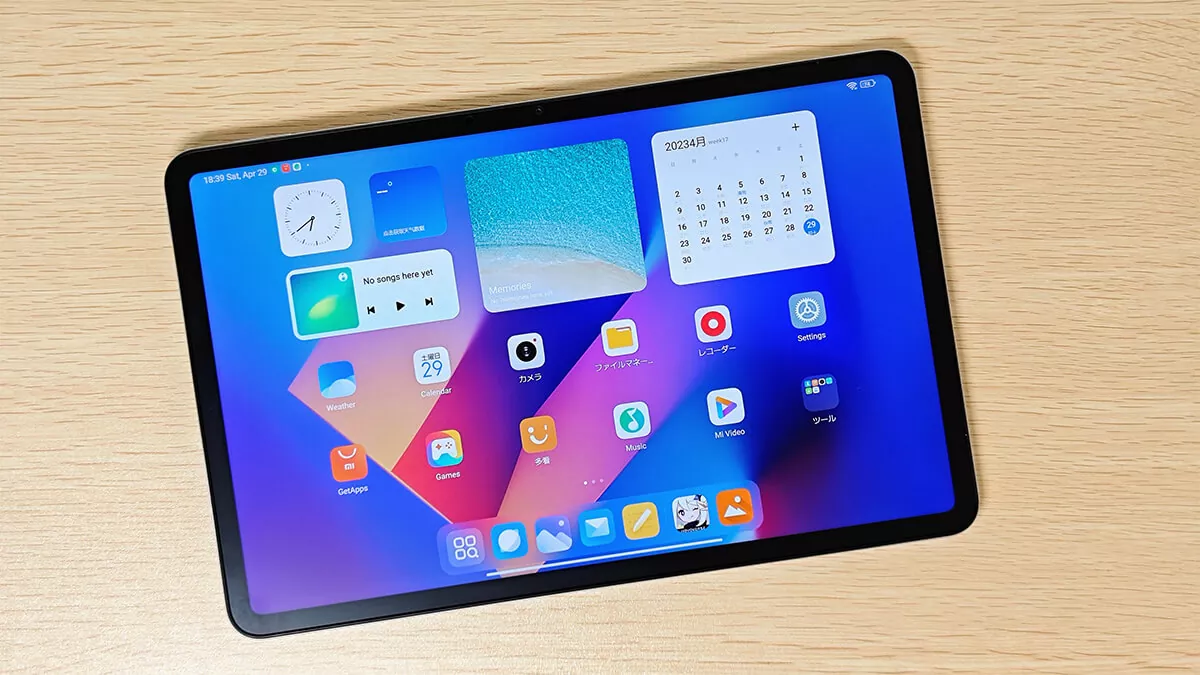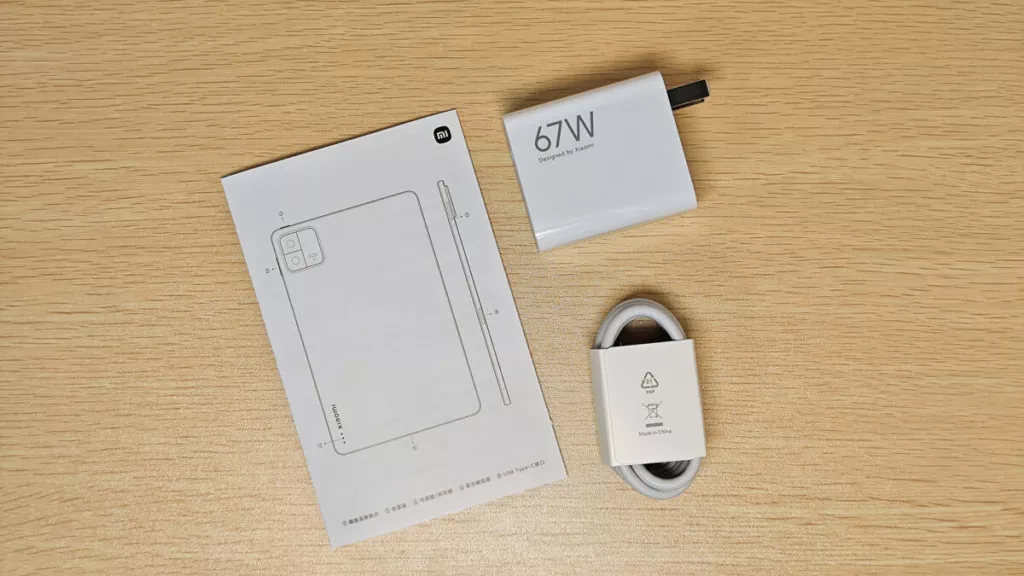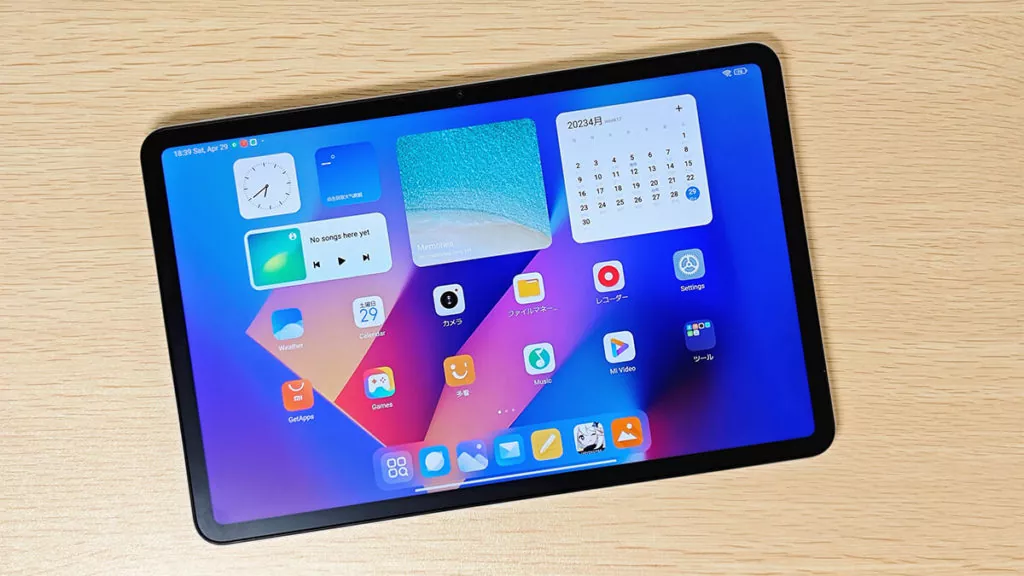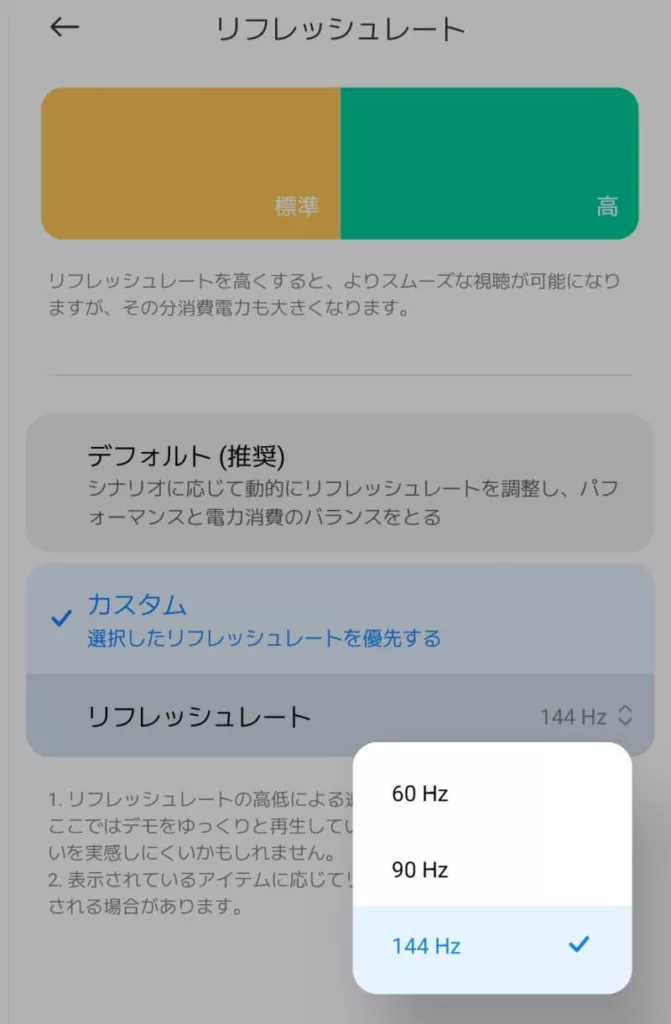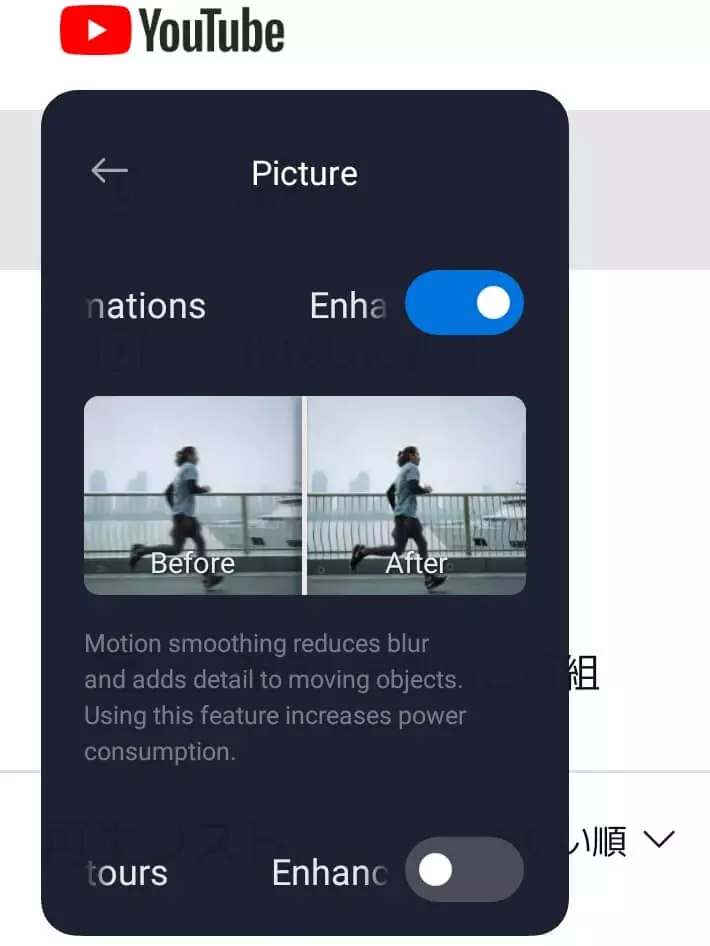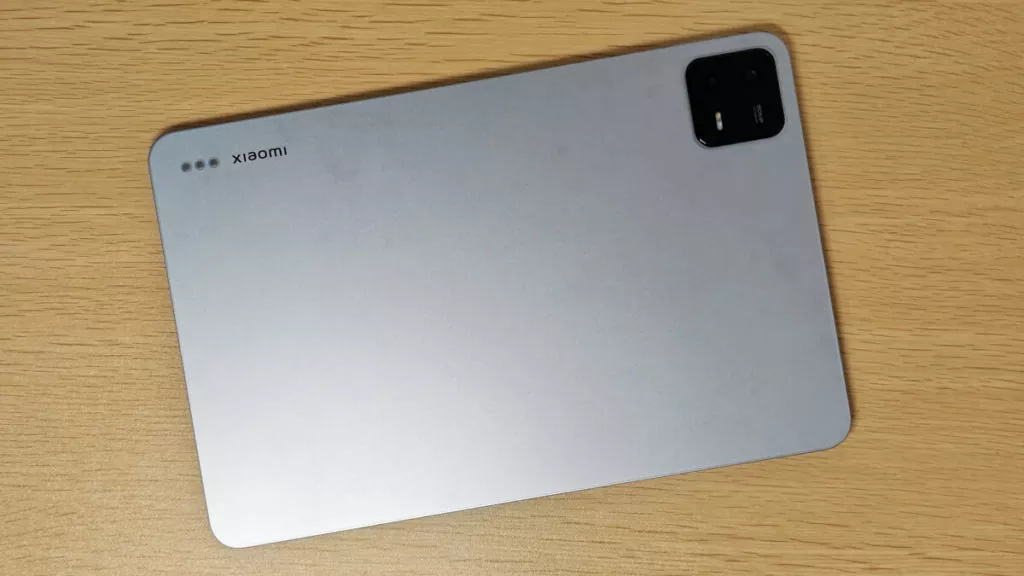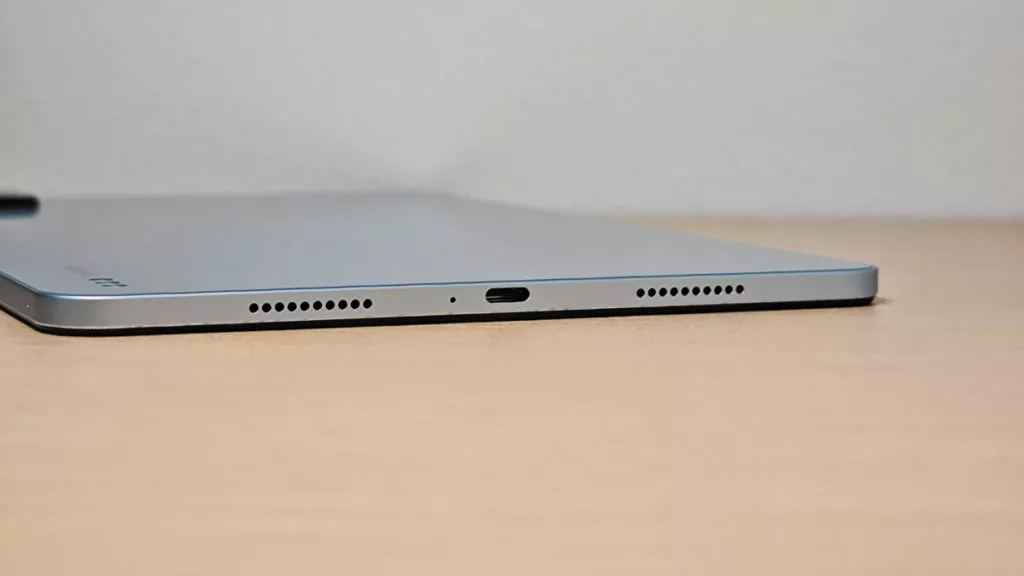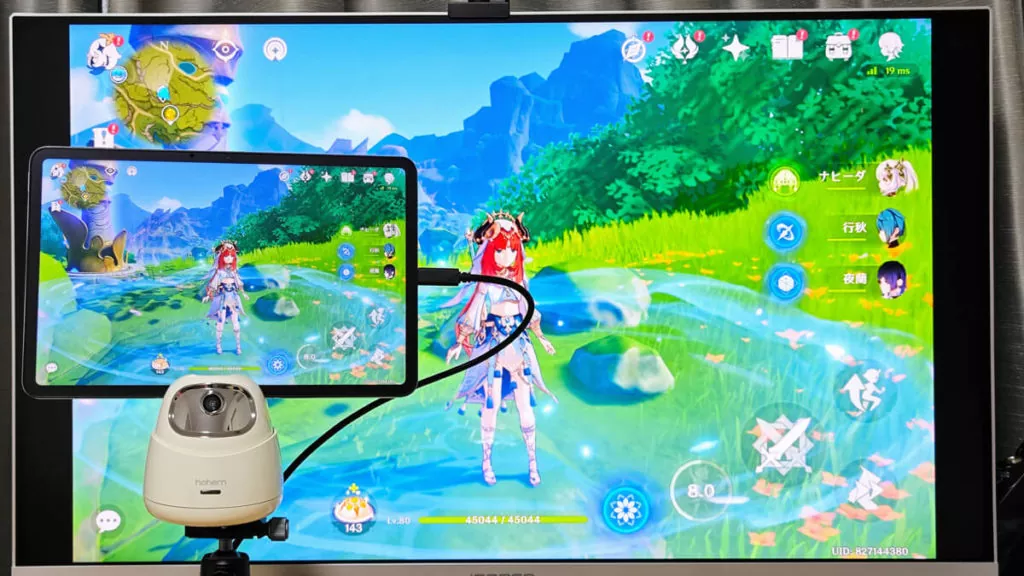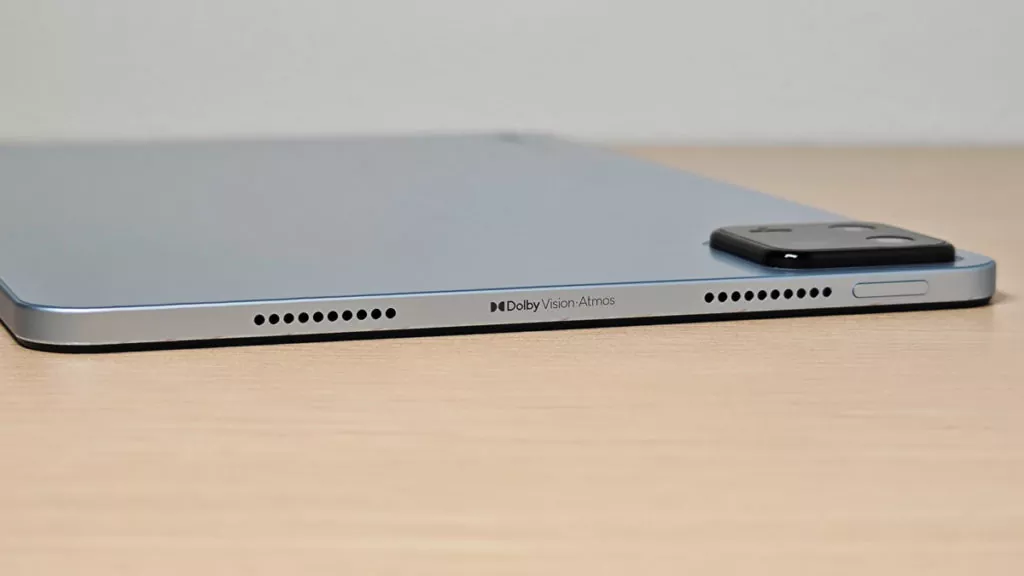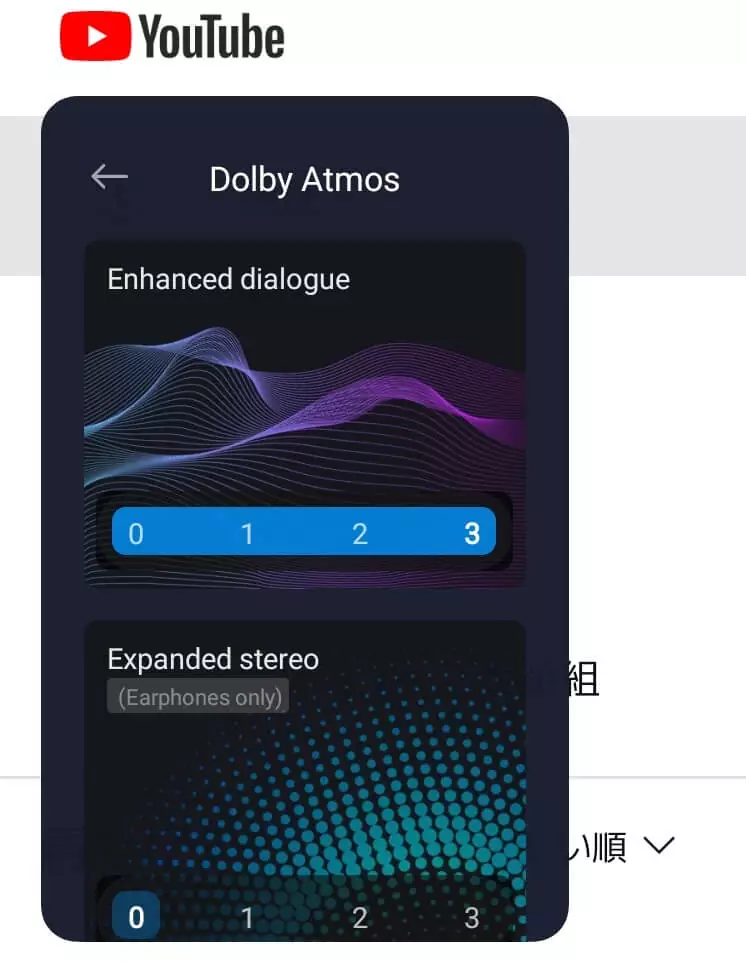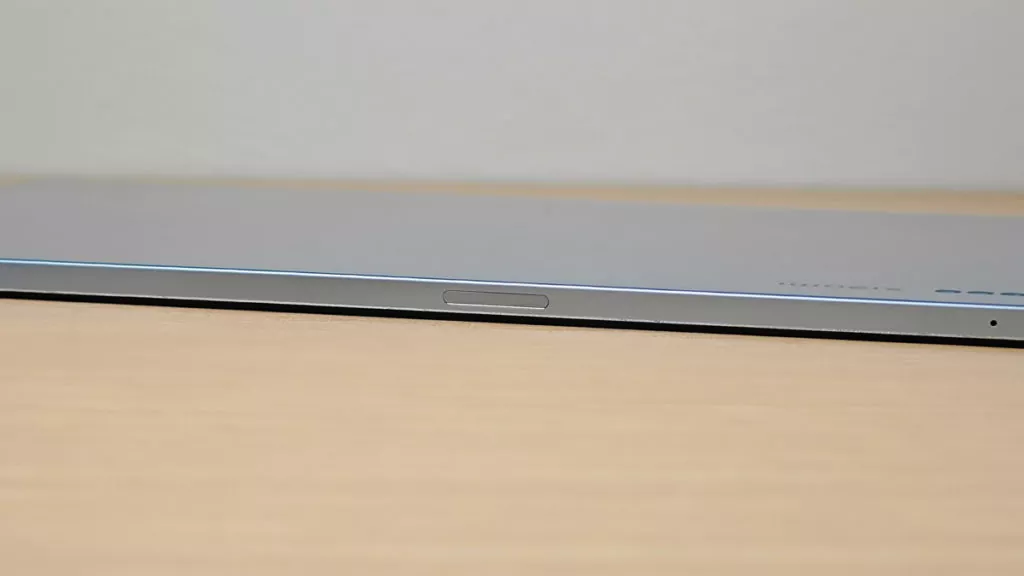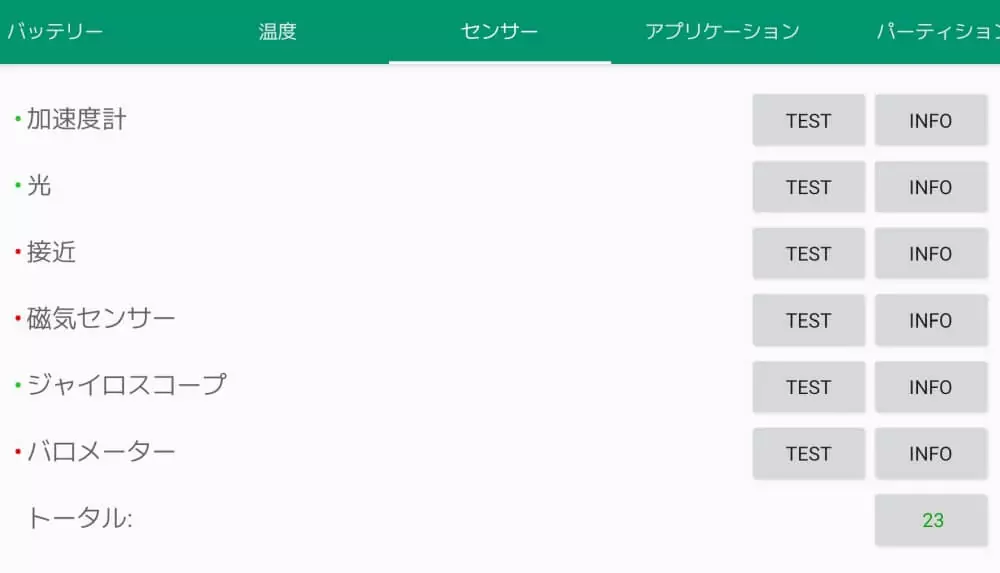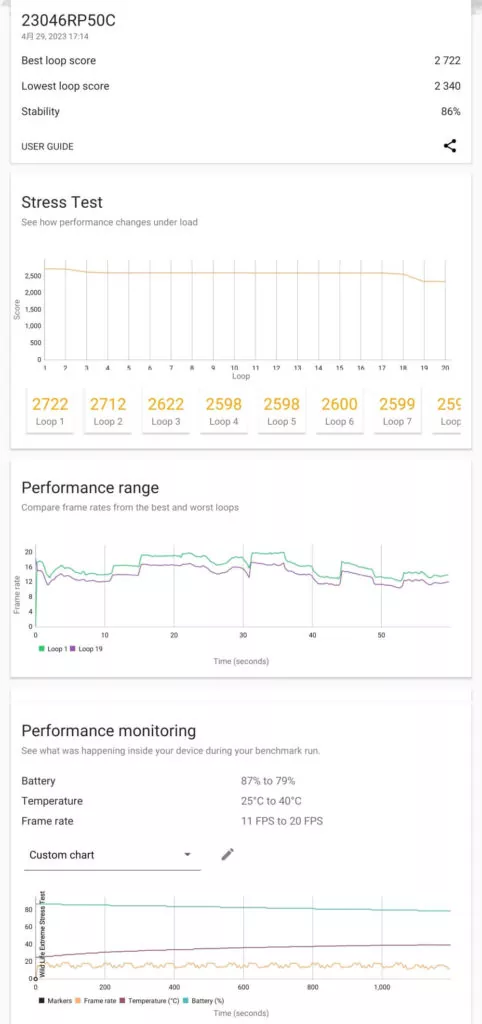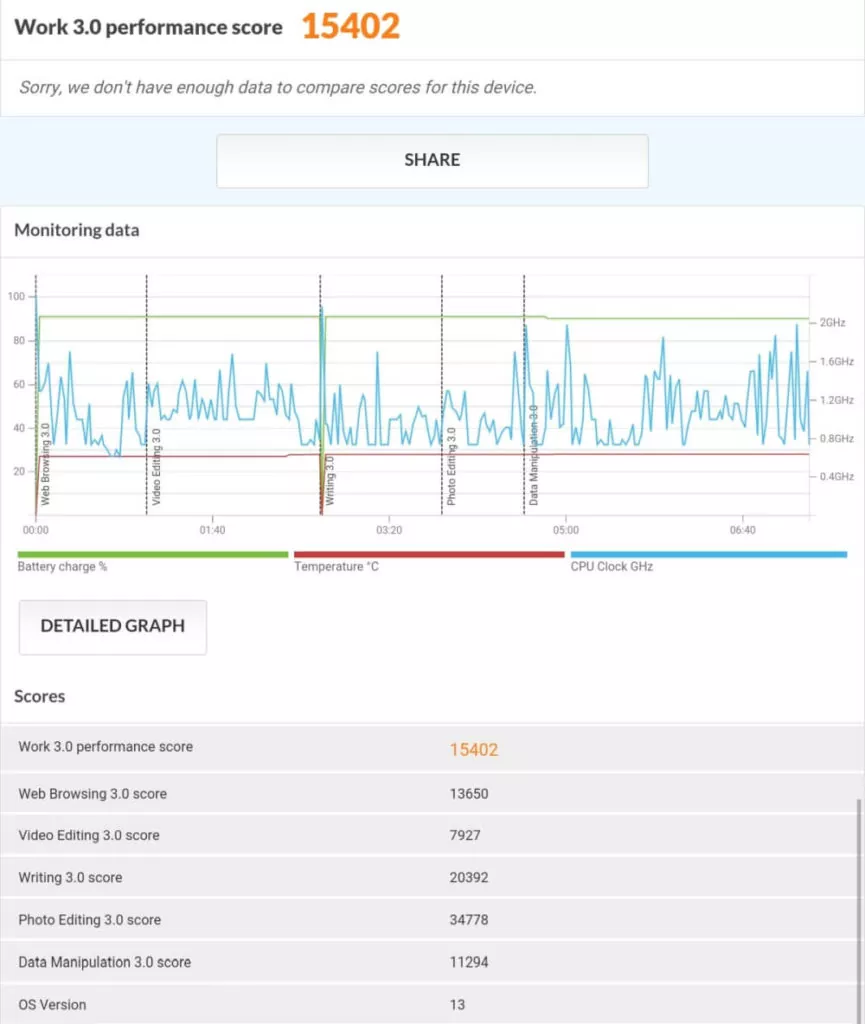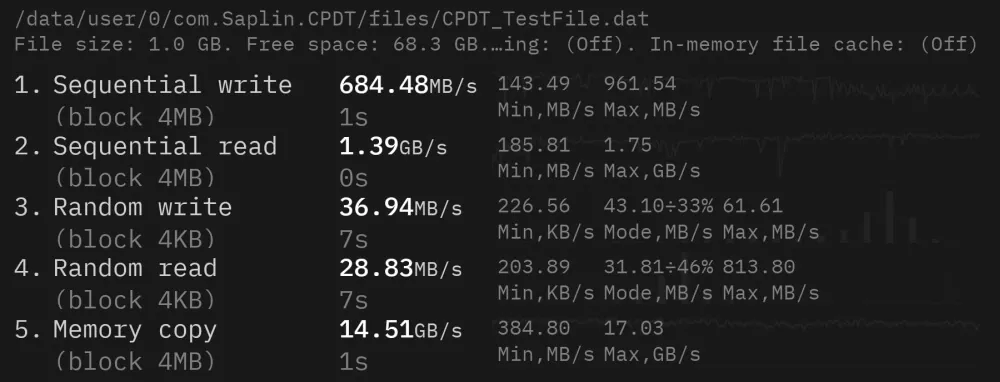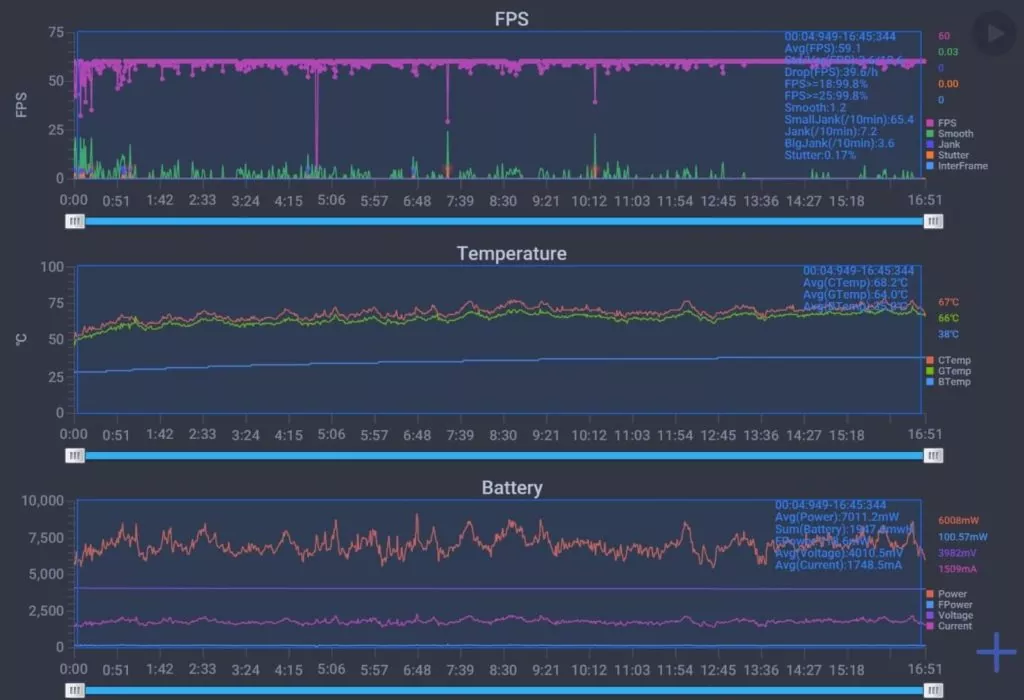Rating: 4.5
I purchased a Xiaomi Pad 6 Pro.
High-performance 144Hz screen tablet
The Xiaomi Pad 6 Pro is a tablet powered by Snapdragon 8+ Gen 1.
The SoC is equipped with excellent heat dissipation, which allows the tablet to sustain the highest performance as an Android tablet.
Moreover, the USB 3.2 Gen 1 port, which is quite rare for Xiaomi, allows for high-speed data transfer and video output.
This review is done on the 8GB+128GB version, V14.0.3.0.TMYCNXM.
- High-performance Snapdragon 8+ Gen 1
- 144Hz-capable display
- USB port with USB 3.2 Gen 1
- Quad speakers with Dolby Atmos support
- 8600mAh battery with 67W charging support
- LCD display
- GPS not supported
| Xiaomi Pad 6 Pro (23046RP50C) | |
|---|---|
| OS | Android 13 |
| RAM | 8GB / 12GB LPDDR5 |
| Storage | 128GB / 256GB / 512GB UFS 3.1 |
| SoC | Snapdragon 8+ Gen 1 |
| Display | 11inch 2880 x 1800 Aspect ratio 4:2.5 144Hz LCD |
| Size | 253.95mm x 165.18mm x 6.51mm |
| Weight | 490g |
| SIM | — |
| Rear Camera | 50MP (Samsung S5KJN1) Depth sensor (SmartSens SC202CS) |
| Front Camera | 20MP (SONY IMX596) |
| Battery | 8600mAh |
| USB Port | USB Type-C (USB 3.2 Gen 1 / Display Alt Mode) |
Index
Accessories include a USB Type-A to C cable, USB Type-A charger, and instruction manual.
144Hz refresh rate support
The Xiaomi Pad 6 Pro features an 11″ 2880 x 1800 resolution display.
It supports a 144Hz refresh rate, which is increasingly being used in tablets in 2023, and provides an even smoother display than 120Hz.
A stylus pen (sold separately) allows for handwriting input.
Refresh rate can be selected from 60 / 90 / 144 Hz.
When measuring brightness with the LX-1336B during all-white HDR video playback with automatic brightness adjustment on, the maximum brightness reached 504 nits.
While this is adequate for indoor use, it is a bit harsh for outdoor use.
The total touch latency measured by the WALT Latency Timer was 47.8 ms.
Widevine L1 allows streaming in HD quality on Amazon Prime Video (beta) and others.
By setting the application in Additional settings → Video toolbox, you can bring up the side menu and use frame interpolation, upscaling, etc.
However, frame interpolation and other functions use SoC functions, so interpolation is weaker than on phones with dedicated chips.
Fingerprint-resistant back
The back of the Xiaomi Pad 6 Pro has a metallic design that is fingerprint resistant.
It weighs 495.7g.
The 50MP Samsung S5KJN1 is used as the main camera, so it can shoot reasonably well for a tablet camera.
It should be sufficient for memo use.
USB 3.2 Gen 1 and video output support despite Xiaomi!
Xiaomi is famous for equipping USB 2.0 ports without hesitation, even if they are high-end, but the Xiaomi Pad 6 Pro is equipped with a USB 3.2 Gen 1 port.
It is capable of high-speed data transfer, and when actually connected to a Windows PC, it was possible to move photos and videos quite smoothly.
Video and audio output in Display Alt mode is also possible.
It has a total of four speakers on each side.
When we played Dolby Atmos test tones, we could hear left/right and center movement, but both left-side speakers were still sounding, even if the ceiling was left, for example.
This is disappointing compared to the Lenovo Legion Y900, which is equipped with eight speakers and is capable of 4.0-channel operation, but the price is different.
Vocals were easily brought to the forefront, and bass was clear and strong. Treble is clear but a bit subdued.
It is equipped with the CS35L41 power amplifier, which is also used in the Xperia 1 II and other devices.
Measuring the audio output delay with the WALT Latency Timer, it was 41.9ms.
This is a little large.
This type is Dolby Atmos compatible and can be turned off with speakers.
If you have added the app to your Video toolbox, you can also use Enhanced dialogue, which makes it easier to hear speech, and Expanded stereo, which enhances the stereo effect in earphones.
Bluetooth codecs are listed on the official website as AAC / LDAC / LHDC5.0 compatible, but actually aptX / aptX HD / aptX Adaptive / aptX TWS+ are also supported.
For LHDC-compatible earphones, you can force a change to LHDC or change to low-latency mode in the settings.
The power and volume buttons are located in the upper left corner.
The power button has a built-in fingerprint sensor.
There is a slot on the top that could accommodate a SIM card, but it has been filled; there may be (or was) a plan to release a 5G-compatible model later.
Although it has a gyroscope, it does not have a magnetic sensor or proximity sensor.
GPS location acquisition is also unfortunately not supported; only Wi-Fi and Bluetooth scanning are available.
11″ tab with the highest performance
The Xiaomi Pad 6 Pro is powered by Snapdragon 8+ Gen 1, and unlike the MediaTek Dimensity 9000, both CPU and GPU are high performance, so it performs well in all situations.
In Geekbench 6, the package name disguised version (=not affected by manufacturer’s illegal boost) had single-core 1704 and multi-core 4363, while the normal version had single-core 1717 and multi-core 4364.
There is no significant change, and it seems that performance is not controlled by the package name determination.
AI performance measured in Geekbench ML with TensorFlow Lite/NNAPI was score 3110.
Is there some special mechanism in place for MIUI for Pad and MIUI for Fold, like the Xiaomi MIX Fold 2….?
The Wild Life Extreme Stress Test in 3DMark with disguised package name showed a score of 2722 to 2340, with a temperature rise of 25°C to 40°C (15°C increase) and battery consumption of 8%.
Although highly stable, the temperature rise is large for a tablet.
PCMark Work 3.0 (package name disguised), which measures performance in everyday use such as document manipulation, had a score of 15402.
This score exceeds many Snapdragon 8 Gen 2 smartphones, and since the CPU/GPU clock tends to be higher in everyday use, the tuning tends to increase the temperature, as can be seen from the 3DMark results.
Xiaomi must have thought it was okay to focus on performance since the tablet has a large surface area and the areas that are prone to heat up are hard to touch with the hand.
As expected, it is not as fast as UFS 4.0, but all speeds are quite fast.
When playing Genshin in Performance mode with the highest quality, 60 FPS setting, and Sumeru and measured with WeTest PerfDog, the average power consumption was 118.63 mW per FPS at 59.1 FPS.
Battery temperatures were up to about 35°C.
While the frame rate was higher than most Snapdragon 8+ Gen 1 phones, the power consumption was still higher and the power efficiency was slightly lower.
The frame rate was better than the 8+ Gen 1, but still better than the Dimensity 8100 and others.
Conclusion
- High-performance Snapdragon 8+ Gen 1
- 144Hz-capable display
- USB port with USB 3.2 Gen 1
- Quad speakers with Dolby Atmos support
- 8600mAh battery with 67W charging support
- LCD display
- GPS not supported
The Xiaomi Pad 6 Pro is recommended for those who want to play games comfortably on a high-performance, large-screen tablet.
Thanks to the Snapdragon 8+ Gen 1, games and all other apps run smoothly, and the high power efficiency and heat dissipation performance will keep the performance stable and high.
It is available in China for 2499CNY and up.
